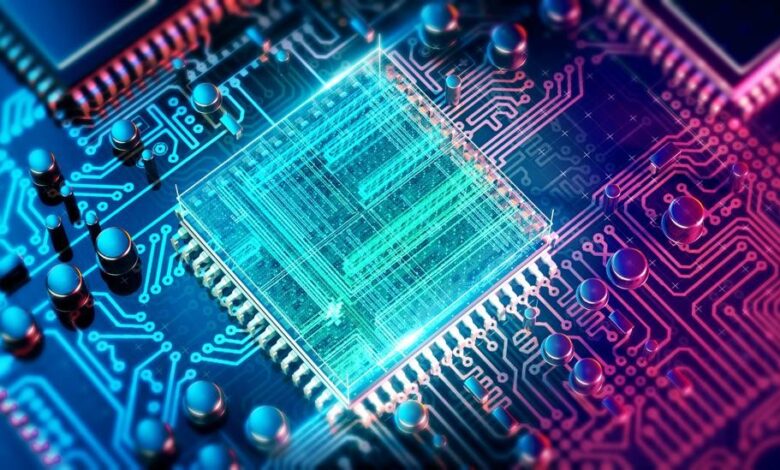
Upgrading your PC Hardware is one of the most effective ways to boost your computer’s performance and ensure it can handle modern software demands. Whether you’re a gamer seeking higher frame rates, a content creator aiming for smoother workflows, or just a casual user wanting to speed up your device, hardware upgrades can significantly improve your system’s capabilities.
This guide offers a comprehensive walkthrough for upgrading your PC Hardware, from identifying outdated components to installing new ones. With detailed steps, expert tips, and safety precautions, you’ll gain the confidence to enhance your PC without complications.
Read More: A Step-by-Step Guide to Upgrading Your PC Hardware
Why Upgrade Your PC Hardware?
Upgrading your PC Hardware provides a new lease on life for your computer, saving you the cost of buying a brand-new system.
Hardware upgrades improve performance, enabling faster processing, smoother multitasking, and better graphics rendering. Whether your PC is lagging, running out of storage, or failing to keep up with your needs, upgrading ensures it meets current demands efficiently.
Investing in hardware upgrades boosts productivity, extends your computer’s lifespan, and prepares it for the latest software advancements.
Assessing Your PC’s Current Hardware
Before upgrading, it’s essential to assess your current PC Hardware to identify which components need improvement.
Tools like Task Manager and third-party software such as CPU-Z can provide insights into your system’s performance metrics. Consider factors like CPU usage, available RAM, and storage capacity. Comparing these metrics with your performance needs helps you prioritize upgrades effectively.
Understanding your PC’s current state ensures that your upgrade plan is targeted and cost-efficient.
Choosing the Right Components for Your PC
Selecting the right PC Hardware components is crucial for achieving the desired performance improvements.
Research compatibility with your motherboard and other existing hardware. Common upgrades include processors, RAM, SSDs, and GPUs. Understanding specifications and performance benchmarks ensures you invest in components that meet your requirements.
Careful selection prevents compatibility issues and ensures you get the most out of your upgrades.
Preparing Your Workspace for an Upgrade
Creating a safe and organized workspace is essential when working with PC Hardware.
Ensure your workspace is clean, well-lit, and free from static electricity, which can damage sensitive components. Gather necessary tools such as screwdrivers, thermal paste, and an anti-static wrist strap. A well-prepared environment reduces risks and makes the upgrade process smoother.
Upgrading Your PC’s Processor (CPU)
The processor is the brain of your computer, and upgrading it is a key step in improving your PC Hardware.
Ensure the new CPU is compatible with your motherboard’s socket type. Remove the old processor carefully, clean the surface, and apply thermal paste before installing the new one. Reattach the cooler securely to ensure optimal performance.
A CPU upgrade delivers faster processing speeds and better multitasking capabilities.
Installing Additional RAM for Better Performance
Upgrading RAM is one of the simplest ways to enhance your PC Hardware and improve multitasking.
Check your motherboard’s RAM slots and compatibility with DDR versions. Install the new modules securely, ensuring they align with the slots’ notches. Restart your PC to verify the system recognizes the additional memory.
More RAM reduces lag and ensures smoother performance, especially during resource-intensive tasks.
Switching to an SSD for Faster Storage
Replacing a traditional hard drive with a solid-state drive (SSD) is a game-changer for PC Hardware performance.
Clone your existing drive or perform a fresh installation of the operating system on the SSD. Install it securely in your PC’s drive bay or M.2 slot. The SSD delivers faster boot times, quicker application launches, and improved overall responsiveness.
Upgrading Your Graphics Card (GPU)
For gamers and creatives, upgrading the GPU is a crucial PC Hardware improvement.
Ensure the new graphics card is compatible with your motherboard and power supply. Remove the old GPU, install the new one in the PCIe slot, and connect necessary power cables. Update drivers to optimize performance.
A better GPU enhances visual quality, rendering speed, and gaming performance.
Improving Cooling Systems for Efficient Performance
Effective cooling systems are vital for maintaining the performance of your upgraded PC Hardware.
Consider upgrading to more efficient air or liquid cooling solutions. Install additional case fans or replace thermal paste on existing components. Proper cooling prevents overheating and ensures stable performance.
Power Supply Unit (PSU) Upgrade for Stability
A reliable power supply is essential for supporting upgraded PC Hardware.
Choose a PSU with sufficient wattage to handle new components. Disconnect the old PSU and replace it with the new unit, ensuring all connections are secure. A stable power supply ensures consistent performance and protects your system from power-related failures.
Upgrading Your Monitor for Enhanced Visuals
A high-quality monitor complements your upgraded PC Hardware, delivering a superior visual experience.
Choose a monitor with better resolution, refresh rate, and color accuracy based on your needs. Connect it using appropriate cables and adjust settings for optimal display quality.
Installing a New Motherboard for Comprehensive Upgrades
Sometimes, upgrading your PC Hardware requires installing a new motherboard to support modern components.
Choose a motherboard compatible with your CPU, RAM, and GPU. Carefully remove the old board, install the new one, and reconnect all components. A new motherboard unlocks advanced features and paves the way for future upgrades.
Configuring Your BIOS Settings After Upgrades
After upgrading PC Hardware, updating BIOS settings ensures compatibility and optimal performance.
Access the BIOS during startup and configure settings for new components. Update the BIOS firmware if necessary to enable advanced features.
Testing Your Upgraded PC Hardware
Testing your upgraded PC Hardware ensures all components function correctly.
Run performance benchmarks and stress tests to verify improvements and stability. Monitoring tools like HWMonitor provide insights into temperatures and performance metrics.
Maintaining Your Upgraded PC
Regular maintenance ensures your upgraded PC Hardware continues to perform at its best.
Clean dust from components, update drivers, and monitor system health. Proper care prolongs the life of your hardware and prevents issues.
Read More: A Step-by-Step Guide to Upgrading Your PC Hardware
Conclusion
Upgrading your PC Hardware transforms your computer into a high-performance machine tailored to your needs. From faster processing speeds to enhanced graphics, these improvements ensure your PC keeps pace with modern demands.
By following this guide, you can confidently upgrade your system, unlocking its full potential. With the right tools, components, and practices, your PC will remain a reliable companion for years to come.
FAQs
1. Why should I upgrade my PC Hardware?
Upgrading improves performance, extends lifespan, and ensures compatibility with the latest software and games.
2. What is the easiest hardware to upgrade?
RAM and SSDs are among the easiest components to upgrade, offering noticeable performance boosts.
3. How do I choose compatible PC Hardware?
Research your motherboard specifications to ensure compatibility with new components like CPUs, RAM, and GPUs.
4. Do I need professional help to upgrade PC Hardware?
Many upgrades, such as RAM and SSDs, can be done by users. Complex tasks like motherboard replacement may require expertise.
5. How often should I upgrade my PC Hardware?
It depends on your usage. Upgrading every 3–5 years ensures your system stays current with technological advancements.











